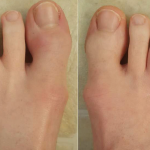Eder et al. analyzed peripheral blood immune cells in PsA to assess the relationship with clinical and imaging findings, as well as the response to treatment after three months for 34 patients. The investigators focused on 16 cell populations among CD3+ positive cells and identified three clusters, each of which was associated with different imaging findings by ultrasound assessment of synovitis, enthesitis and peritenon inflammation. Further, among the cell phenotypes observed, CD4+ memory and Th1 cells levels were correlated with more synovitis and reduced responses to advanced therapies while γδ cells and CD8+ cells were associated with milder disease and a better treatment responses.
At this point in time, novel biomarkers (e.g., transcriptomics, CyTOF) are in early phase of development, valuable for elucidating mechanisms and suggesting opportunities for refining and expanding the array of biomarkers that can be used clinically.
In Sum
I was excited to read the ACR Convergence 2023 abstracts. While still pondering their full implications, I already look forward to seeing the abstracts of 2024 to learn about the progress in personalized medicine and the application of modern science to improve clinical outcomes.
David S. Pisetsky, MD, PhD, is a professor of medicine and immunology at Duke University School of Medicine, Durham, N.C., and a staff rheumatologist at the Durham VA Medical Center. He also served as the first physician editor of The Rheumatologist.
References
- Olopoenia A, Martin A, Orroth K, et al. The burden of oligoarticular psoriatic arthritis in the United States [abstract]. Arthritis Rheumatol. 2023;75(suppl 9).
- Gutierrez Manjarrez J, Thib S, Cook R, Eder L. The association between sonographic imaging phenotype and response to treatment in patients with psoriatic arthritis [abstract]. Arthritis Rheumatol. 2023;75(suppl 9).
- Gazel U, Noges K, Ayan B, et al. Pain mechanisms in psoriatic arthritis: differentiating inflammation related pain in enthesitis using ultrasound, in comparison to functional MRI [abstract]. Arthritis Rheumatol. 2023;75(suppl 9).
- Raychaudhuri S, Abdelhafez Y, Mazza D, et al. Spinal inflammation a dominant pathology in psoriatic arthritis: Characterization and Quantification by In-Vivo 18F-FDG Total-Body PET/CT Imaging [abstract]. Arthritis Rheumatol. 2023;75(suppl 9).
- Macfarlane G, Rotariu O, Lembke S, et al. The influence of ‘fibromyalgia-ness’ on treatment response amongst patients with psoriatic arthritis (PsA). Results from the British Society for Rheumatology Psoriatic Arthritis Register (BSR‐PsA) [abstract]. Arthritis Rheumatol. 2023;75(suppl 9).
- Snoeck Henkemans S, de Jong P, et al. The window of opportunity in psoriatic arthritis: Similar to rheumatoid arthritis? [abstract]. Arthritis Rheumatol. 2023;75(suppl 9).
- Ganatra D, Samman A, Nasri D, et al. Identifying synovial fluid micro-RNA signature that distinguishes psoriatic arthritis from osteoarthritis [abstract]. Arthritis Rheumatol. 2023;75(suppl 9).
- Taylor P, Walsh D, Takeuchi T, et al. Direct and indirect effects of upadacitinib or adalimumab on pain in psoriatic arthritis: Results from a randomized phase 3 study [abstract]. Arthritis Rheumatol. 2023;75(suppl 9).
- Merjanah S, Driscoll D, Peloquin C, et al. Major adverse cardiovascular event and venous thromboembolism risk comparing advanced therapies among individuals with axial spondylarthritis and psoriatic arthritis [abstract]. Arthritis Rheumatol. 2023;75(suppl 9).
- Li Q, O’Rielly D, Jenkins K, et al. Identifying differentially expressed genes to predict TNF-alpha and IL-17A inhibitor response in psoriatic arthritis [abstract]. Arthritis Rheumatol. 2023;75(suppl 9).
- Eder L, Li X, Thib S, et al. Deep cellular immune profiling in psoriatic arthritis correlates with imaging phenotypes and response to targeted advanced therapy [abstract]. Arthritis Rheumatol. 2023;75(suppl 9).


